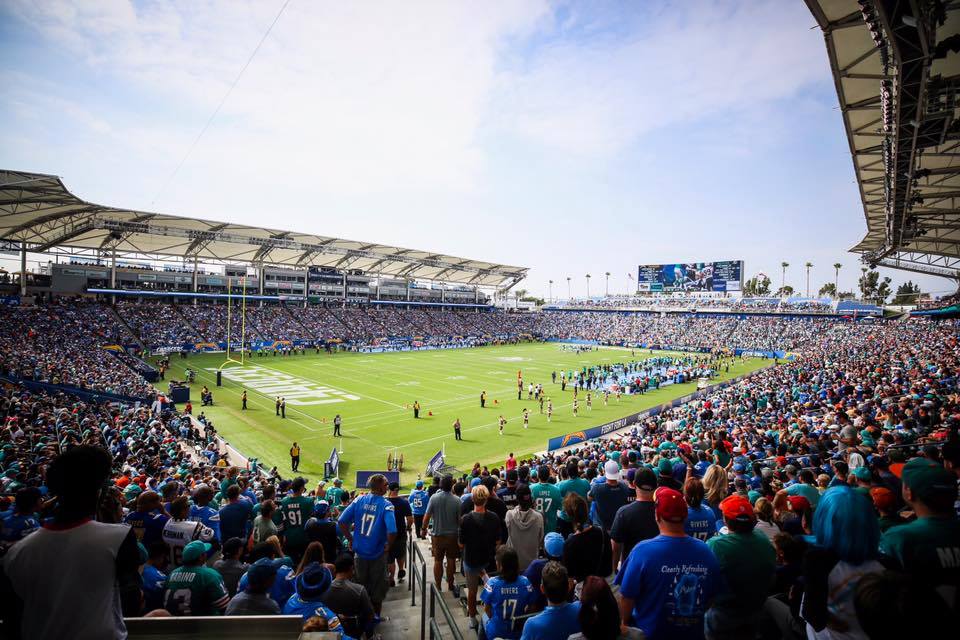New city, same ol’ Chargers.
With a pair of last-second losses on missed field goals in a span of seven days, fans of the NFL franchise were unfortunately treated to the same kind of on-field failure that became the hallmark of the most-recent editions of the Chargers.
The one big difference, of course, was not the sight, but the site.
The Los Angeles Chargers, formerly of San Diego, made their home debut on Sunday at the lyric little bandbox known as the StubHub Center. With a capacity of 27,000, StubHub is – by a wide margin – the smallest current stadium in the NFL. It is a temporary home for the Chargers while they wait, along with their new roomies, the Los Angeles Rams, for the new, shiny, 70,000-seat stadium in Inglewood to be completed in time for the 2020 season.
So, this is the Chargers’ home for the time being, and in many ways, based on their 19-17 loss to the Miami Dolphins on Sunday, things haven’t really changed since the team left San Diego in January.
For one thing, despite the limited number of seats, the game was not a sellout. Only 25,381 passed through the turnstiles on Sunday, about a 94-percent capacity.
Opening kickoff crowd for @chargers game today – this can't be blamed on the weather pic.twitter.com/aKrXr9Bmiq
— Matt Baylow (@MattBaylow) September 18, 2017
But, by contrast, in the final year of their games in San Diego, the Chargers played to a league-worst 80 percent capacity of the 70,561-seat Qualcomm Stadium.
And like the games in San Diego, it was often difficult to discern the home team, based on crowd noise. The StubHub Center was awash in a healthy dose of aqua on Sunday, as Dolphins fans rivaled Chargers fans in solid numbers, a scene so familiar to veteran Chargers players.
“Obviously the loudest roar came at the end after the missed field goal,” Chargers quarterback Philip Rivers told ESPN. “That’s where you really got to see how many Dolphins fans there were. I heard the roar before I saw the official’s signal. I wasn’t sure which roar it was.
“We battled it down in San Diego — I think just obviously the weather, the climate lends to that. If I was somewhere else and was a fan picking a road game to go to, this would be a destination. We’ve always had to battle that a little bit more. I think that’s something [where] if we get going and put some wins together — we’ve got to get one first — then we’ll see more and more of our fans.”
There were actually two NFL games in Los Angeles on Sunday, something that hasn’t happened since both the Rams and Raiders last both played there (technically, the Rams in Anaheim) in 1994. And it did not bode well for the return of pro football to the area.
While the Rams drew just 56,612 for their game against the Redskins at the L.A. Coliseum, that number was easily eclipsed by USC-Texas, which played an overtime thriller at the Coliseum just 24 hours earlier. In fact – and a sad fact for the NFL in LA – the combined Rams-Chargers attendance Sunday was 81,993 – still less than the 84,714 for the Trojans.
But, if the Chargers had any concerns about Sunday and their future in Los Angeles, it’s not like things were that much better at their old home down the I-5 in San Diego. Late into Saturday night, as the San Diego State Aztecs were completing a last-minute touchdown drive to upset No. 19 Stanford, the lights went out for 22 minutes.
Yes, San Diego, the NFL party is over.
Image courtesy Los Angeles Chargers.

